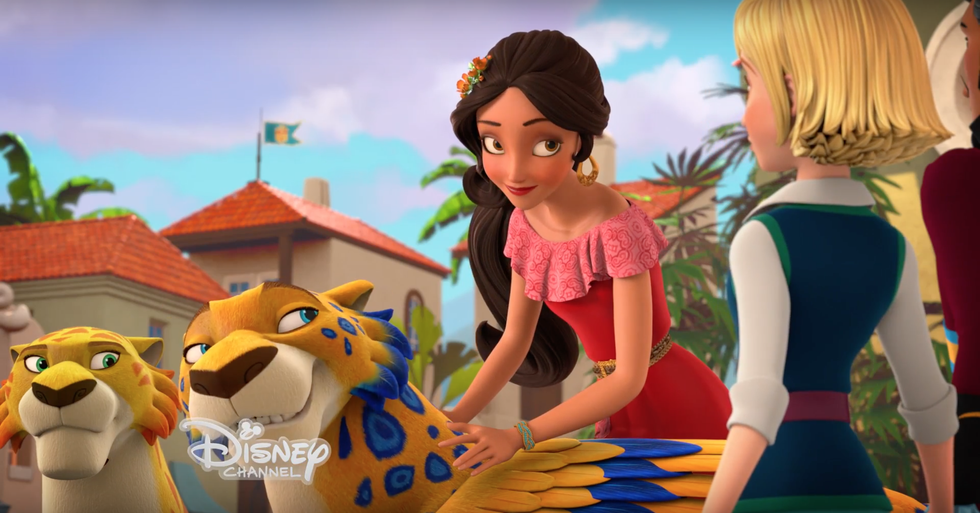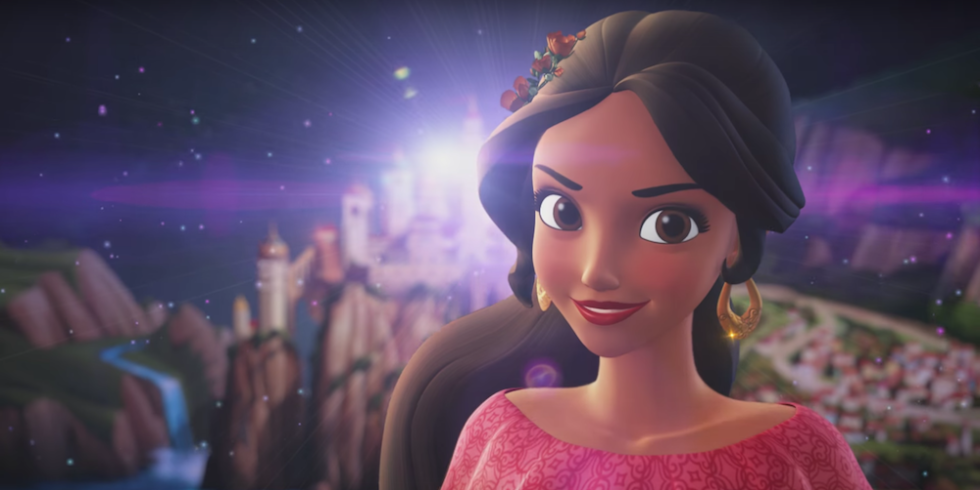The other day, I read an article published by the Huffington Post that insinuated Disney’s newest princess, Princes Elena, was not actually a representation for the Latino and Hispanic communities. The article focuses on Disney’s introduction to Elena released last year on ohmy.disney.com, which states that she is “inspired by diverse Latin cultures and folklore,” rather than actually being Latina. Even though I do feel like this statement is valid in the sense that Elena cannot be directly tied to a specific Central or South American culture, I disagree on the position that Elena is not a Latina princess. Elena is, in fact, a good representation for the Latino community and young girls across the globe.
For starters, Elena looks like the majority of Latina and Hispanic women. She has dark, thick hair, brown eyes and dark skin. She is also being voiced by Aimee Carrero, a Dominican-American actress, who also stars on Freeform’s (formerly ABC Family) "Young and Hungry." In an interview with Latin Post she said, “I hope [Elena] will be very inspiring. I think that young audiences need to see a Latina woman or a woman of color in a position of power and doing a great job. If we move beyond the cultural and gender issues I think this is about a person trying to find her place in the world. Elena is a daughter, a granddaughter, a sister, a friend but she has an immense responsibility. We all wear different hats in our lives and we are all trying to do our best. So more than anything I hope that they see a layered human being.”
Another point is that the Disney universe is one of make believe, and is moving towards more fictional lands in their tales of princesses and other strong characters. This holds true for most of Disney’s princesses. "Frozen," for example, takes place in Arendale, but where exactly is that? One can infer that because "Frozen" is based on Hans Christian Anderson’s "The Ice Queen," Arendale is somewhere in northern Europe, like Denmark or Norway. The same issue is presented in some of Disney’s biggest hits: Rapunzel in "Tangled," Ariel in "The Little Mermaid" and Aurora in "Sleeping Beauty." Disney seldom states the heritage of its princesses, and for good reason: Relatability.
Even though there are exceptions to this phenomenon—like Pocahontas, Mulan and Princess Tiana—Disney is using Elena’s vague heritage to broaden her relatability. Aimee Carrero, when asked what to expect from Princess Elena, said, “I know that what makes it special is the Latina part but I think people will find it relatable. I think the show is really special. Disney has never done anything like this. I mean we run the gamut from salsa to tango to mariachi. It's really cool and I'm really excited about the music and it will drop people into that world immediately.”
Disney is trying to broaden its diversity to reach marginalized demographics. Nancy Kanter, Executive Vice President and General Manager, Disney Junior Worldwide said, “Our creative team has delivered a universal story with themes that authentically reflect the hopes and dreams of our diverse audience.” She continued, “What excites us most is the chance to use distinctive animation and visual design to tell wonderful stories influenced by culture and traditions that are familiar to the worldwide population of Hispanic and Latino families and reflect the interests and aspirations of all children as told through a classic fairy tale."
All in all, Princess Elena is indeed Latina. She will be taking over Disney Channel starting July 22, 2016.
























